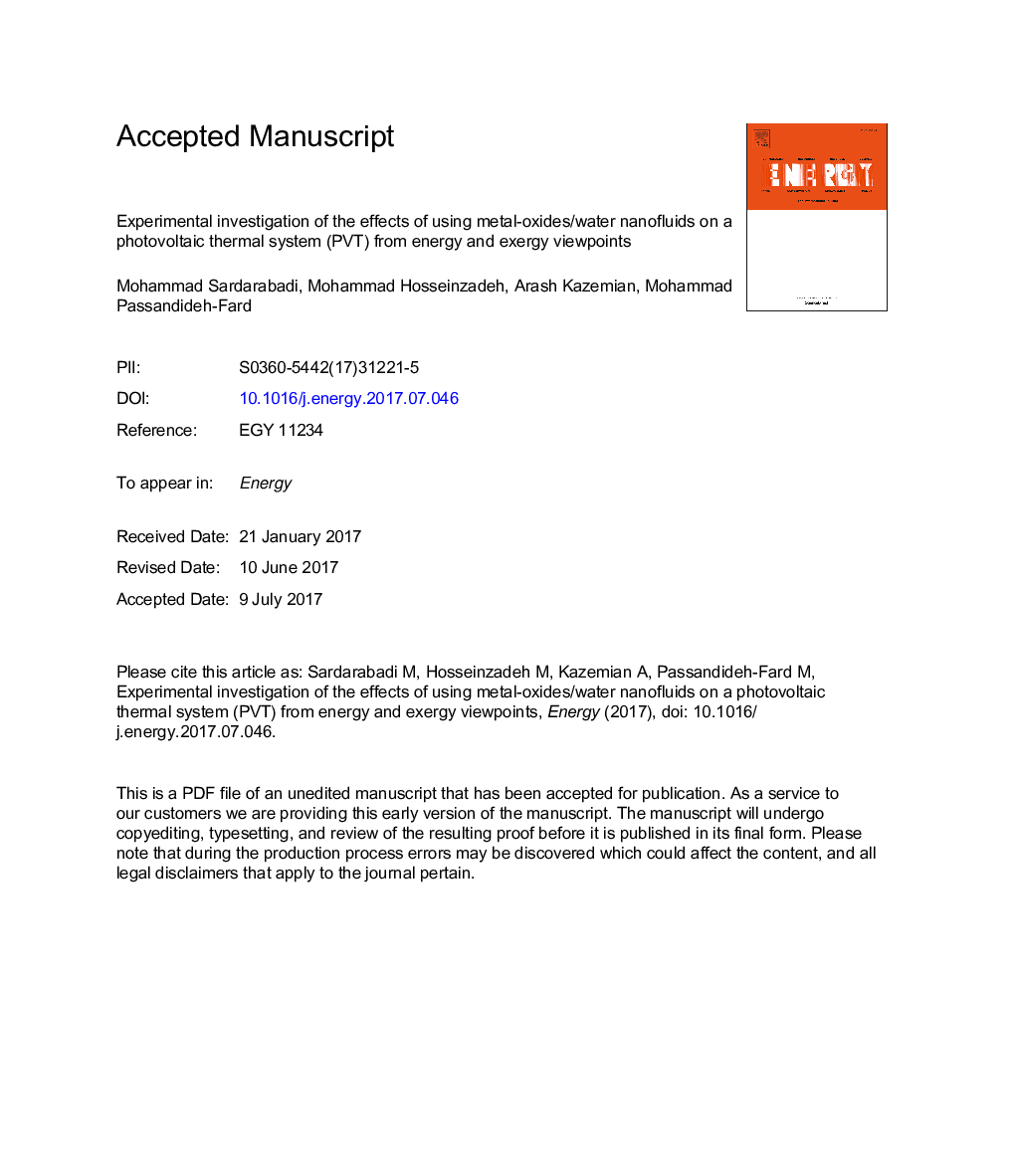| Article ID | Journal | Published Year | Pages | File Type |
|---|---|---|---|---|
| 5475529 | Energy | 2017 | 47 Pages |
Abstract
In this paper, an experimental investigation on the effects of using metal-oxides/water nanofluids as a coolant system in a photovoltaic thermal system (PVT) from the energy and exergy viewpoints are presented. The considered nanoparticles include Al2O3, TiO2 and ZnO dispersed in deionized water as the base fluid by 0.2Â wt%. A constant mass flow rate of 30Â kg/h for the fluid flowing through the collector is considered. The experiments are performed on selected days in August and September at the Ferdowsi University of Mashhad, Mashhad, Iran. The uncertainty of the experiments is less than 5%. The measured data are analyzed from the energy/exergy viewpoints and entropy generation. Based on the extensive results presented in this paper, the PVT/ZnO and PVT/TiO2 systems show a better overall energy and exergy efficiencies compared to other systems. The results indicate that the overall exergy efficiencies for the cases of PVT/water, PVT/TiO2, PVT/Al2O3, and PVT/ZnO are enhanced by 12.34%, 15.93%, 18.27% and 15.45%, respectively, compared to that of the photovoltaic unit (PV) with no collector. Moreover, the PVT/Al2O3 system has the highest enhancement of entropy generation compared to the PV unit.
Related Topics
Physical Sciences and Engineering
Energy
Energy (General)
Authors
Mohammad Sardarabadi, Mohammad Hosseinzadeh, Arash Kazemian, Mohammad Passandideh-Fard,
